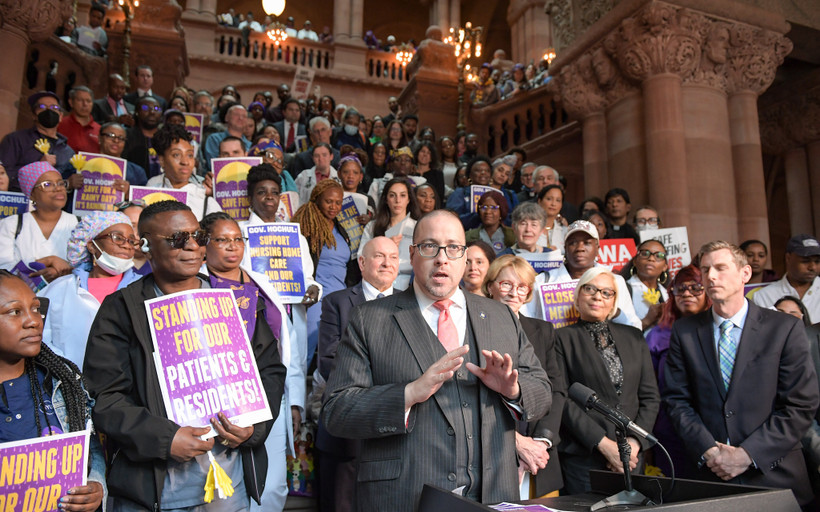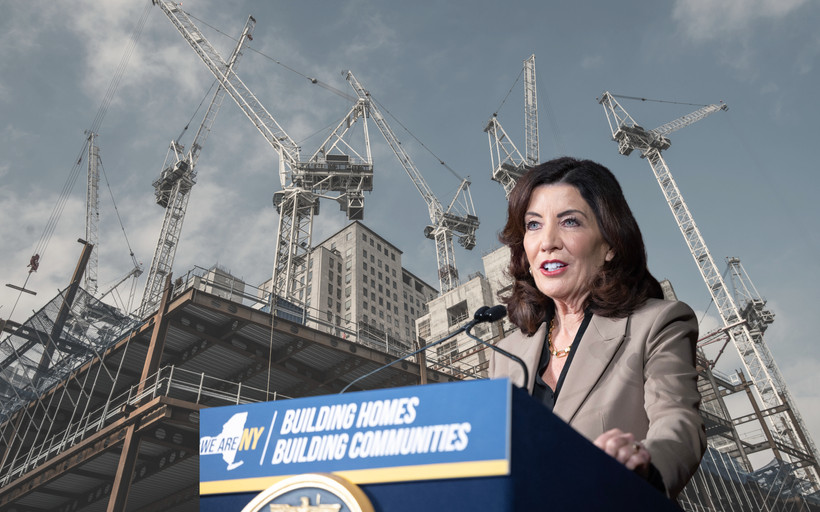On Medicaid, Hochul’s Budget Departs from Cuomo Era
Hochul proposed raising the cap on Medicaid spending, which Cuomo created, and boosting reimbursement rates, which Cuomo cut.


A version of good cause eviction and new hate crimes are in; new taxes on the wealthy and education cuts are out. Here’s where things landed in this year’s budget.
The Assembly rejected legislation that would have sped up New York’s transition away from gas.
Low-wage manual laborers can sue to make their bosses pay them weekly. Hochul’s late-breaking budget addition may undermine that right.
Hochul’s proposed Medicaid cuts include $125 million from Health Homes, a program that connects the neediest New Yorkers with medical care, food assistance, and more.
Stark disparities in access to life-saving medication for opioid addiction persist between facilities — and racial groups.
New York legislators have a plan to claim billions in federal funding for health care, driving a fight between industry groups.
It’s the first step New York has taken to address its housing shortage in years — but tenant groups are fuming and real estate wants more.
New York has one of the weakest consumer protection laws in the country. This year’s state budget may change that.
One in five kids in New York live in poverty. Legislators are pushing Hochul to fulfill her promise to cut that rate in half.


